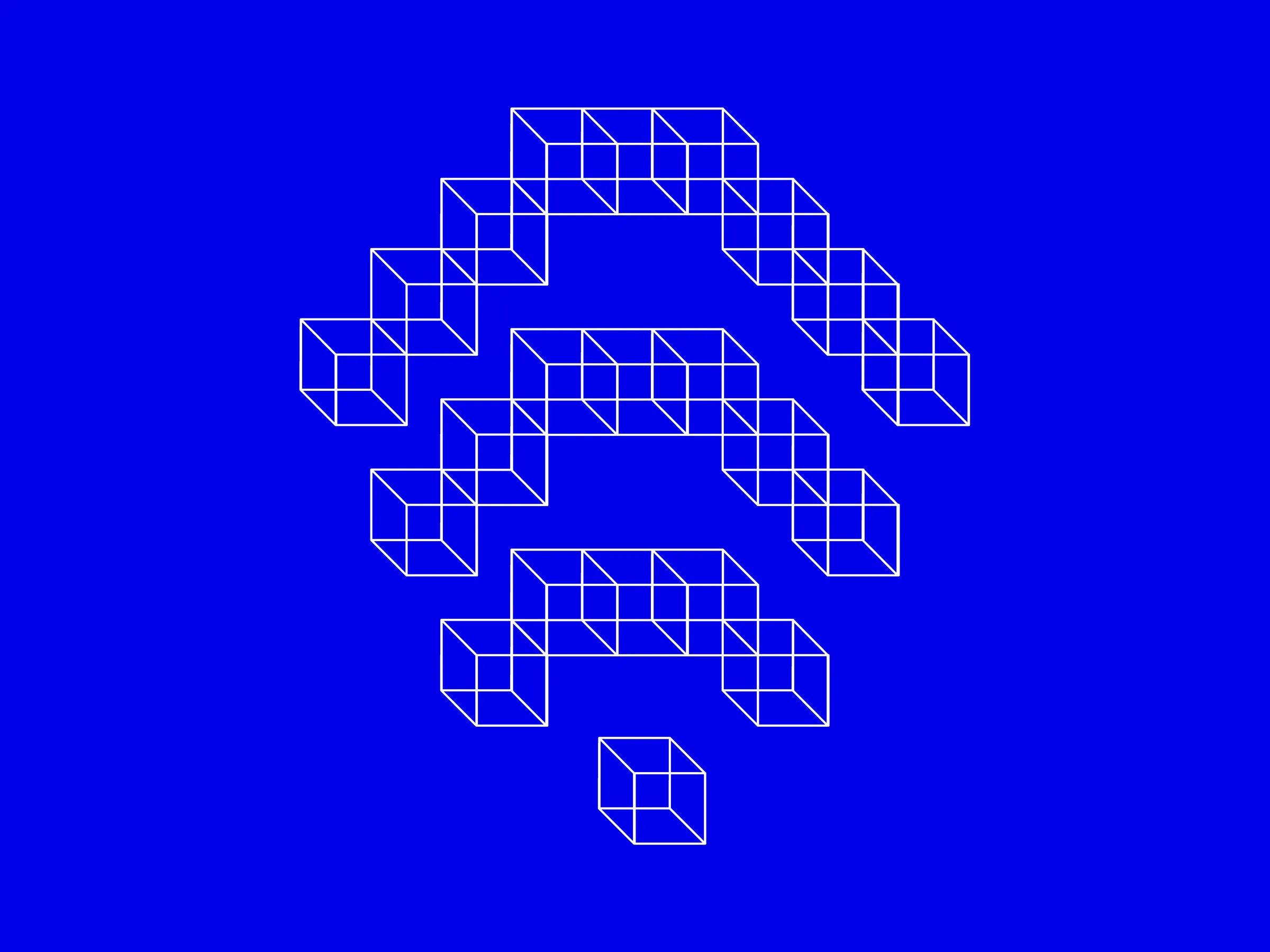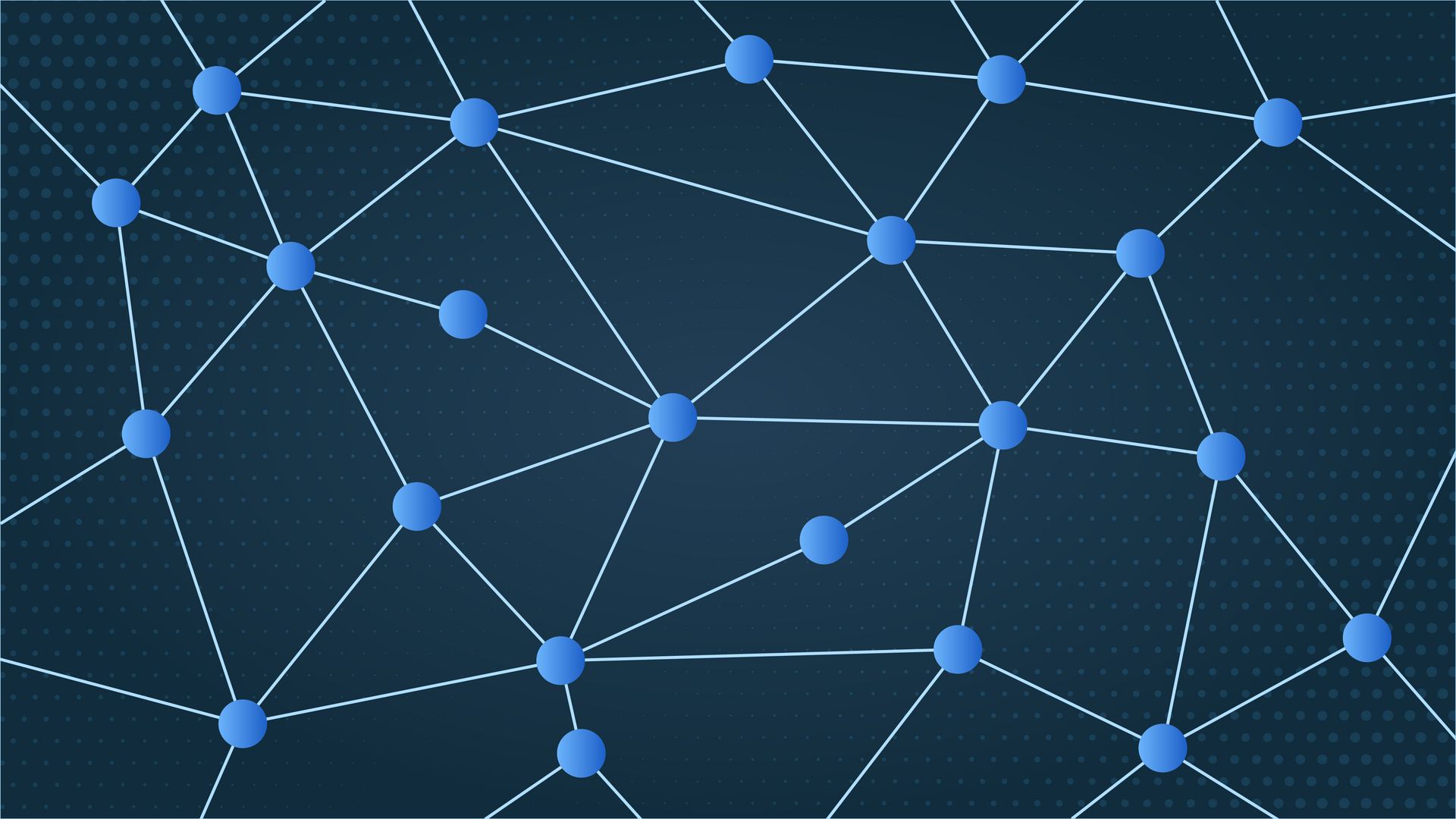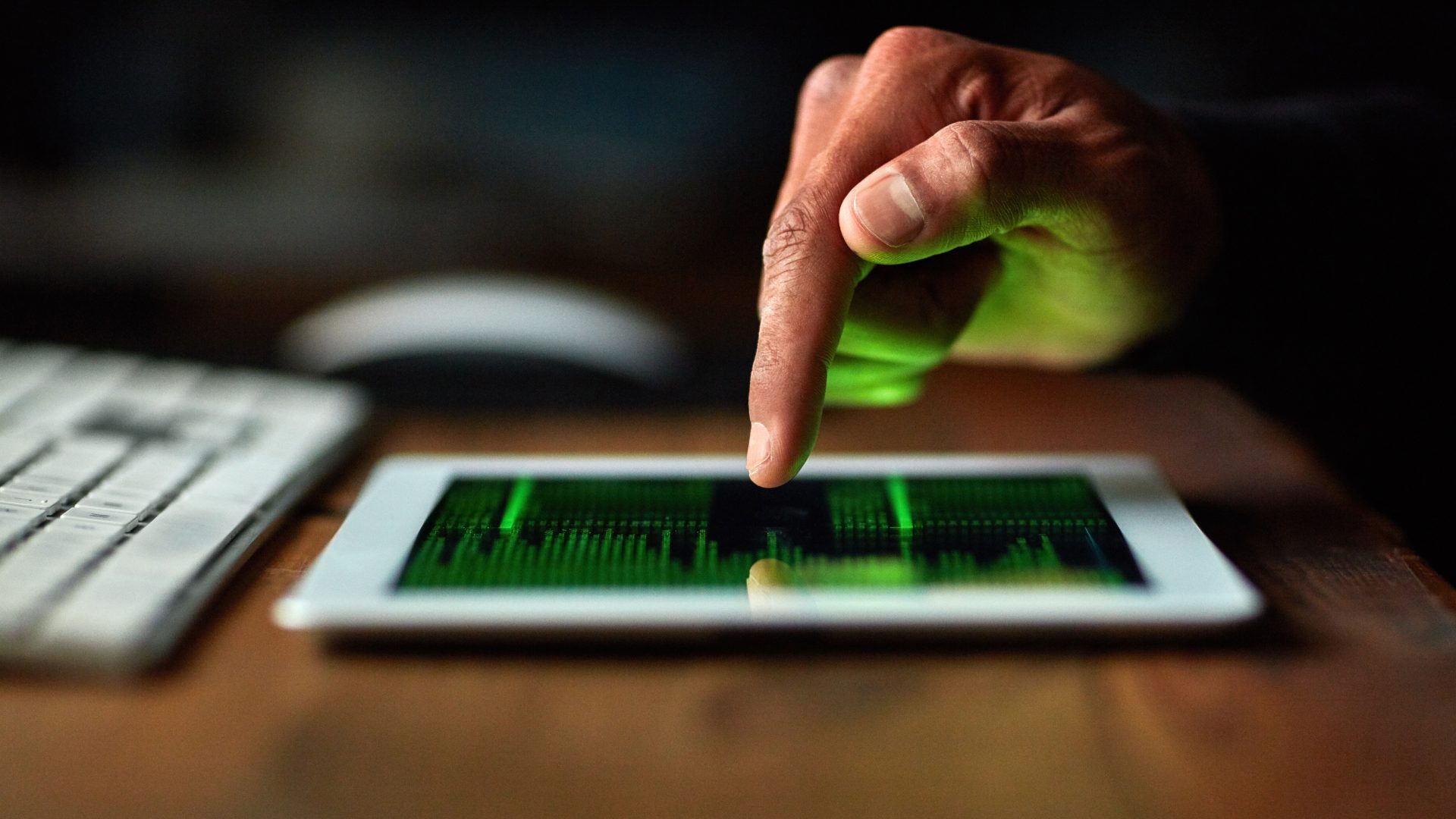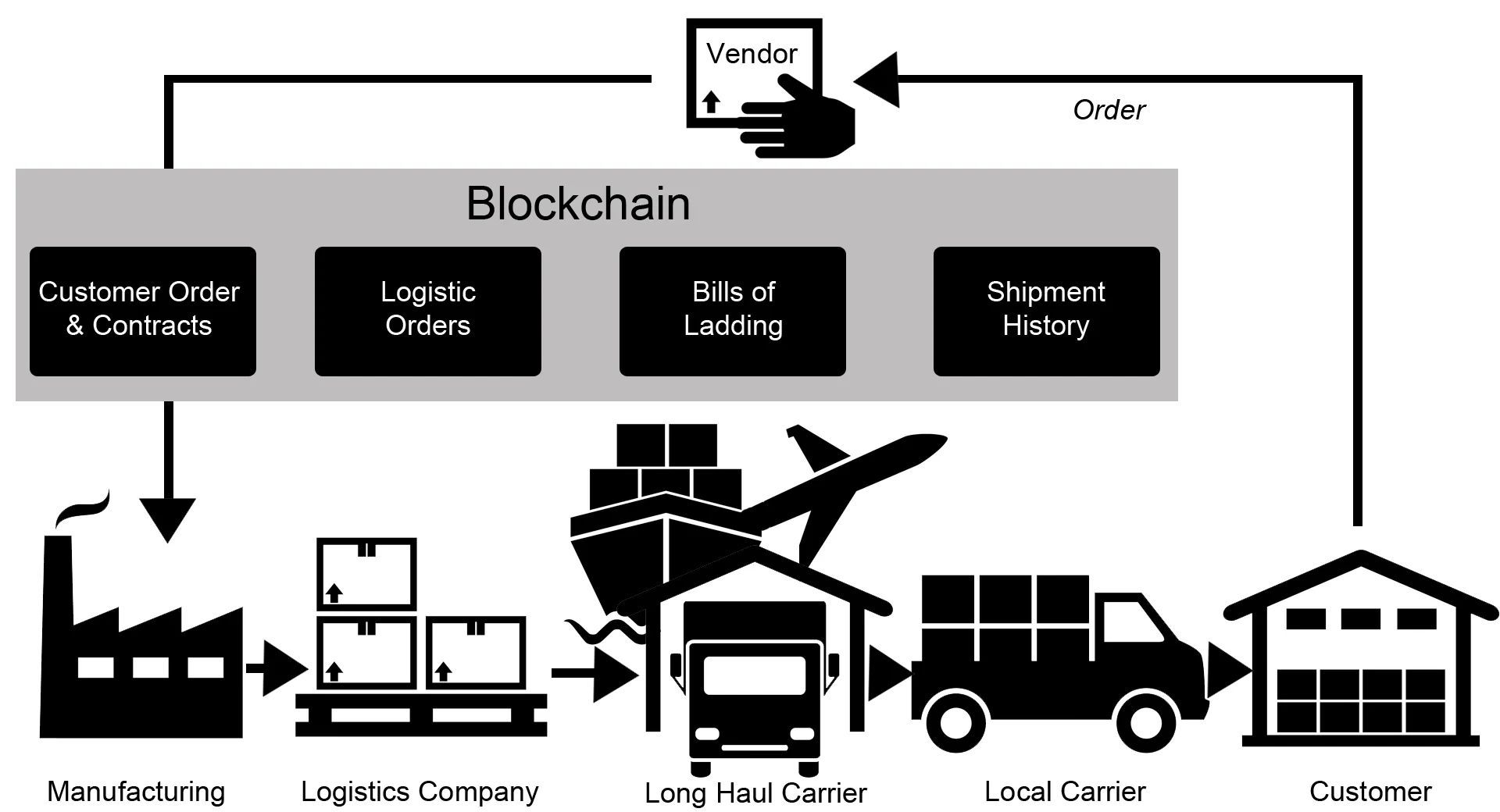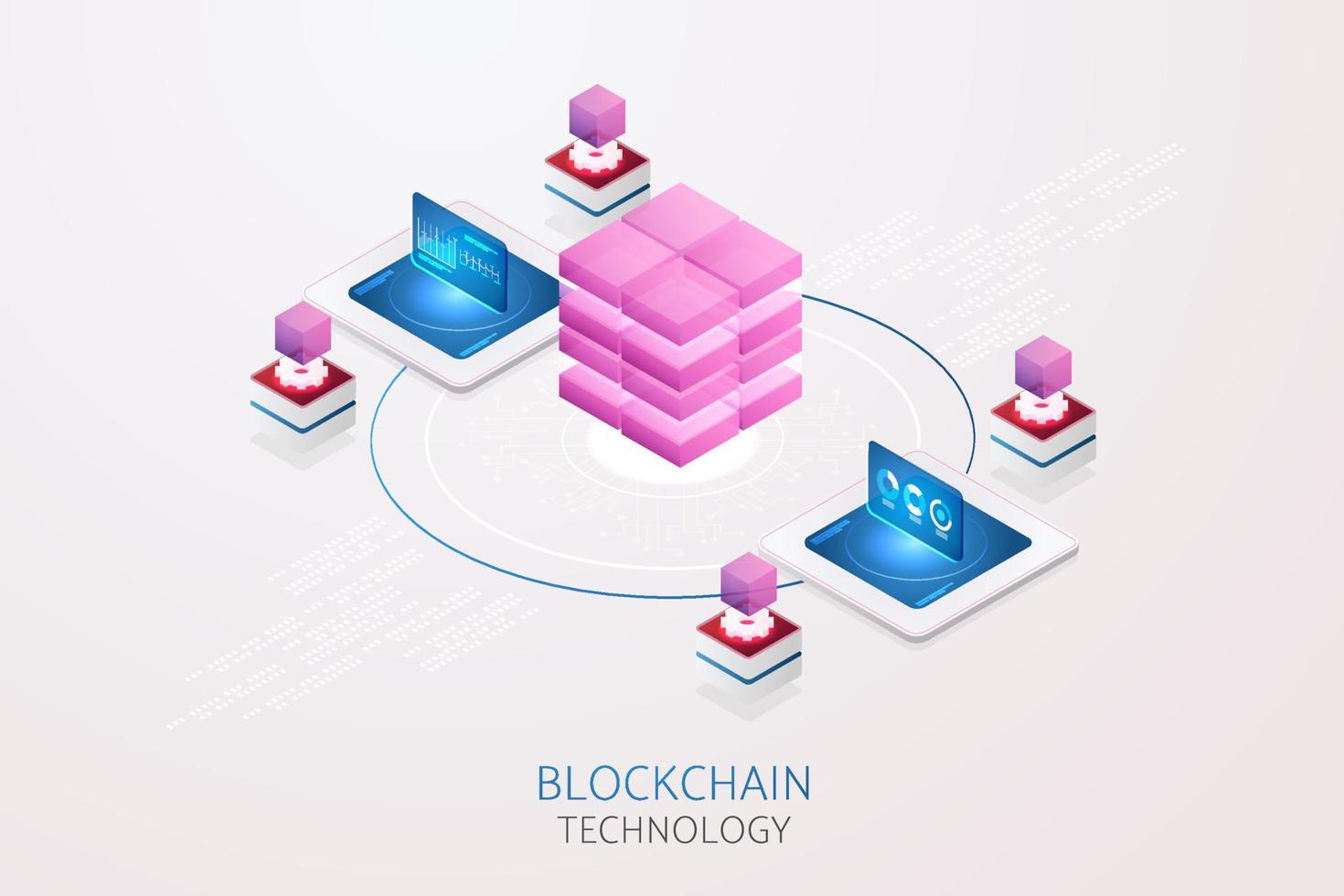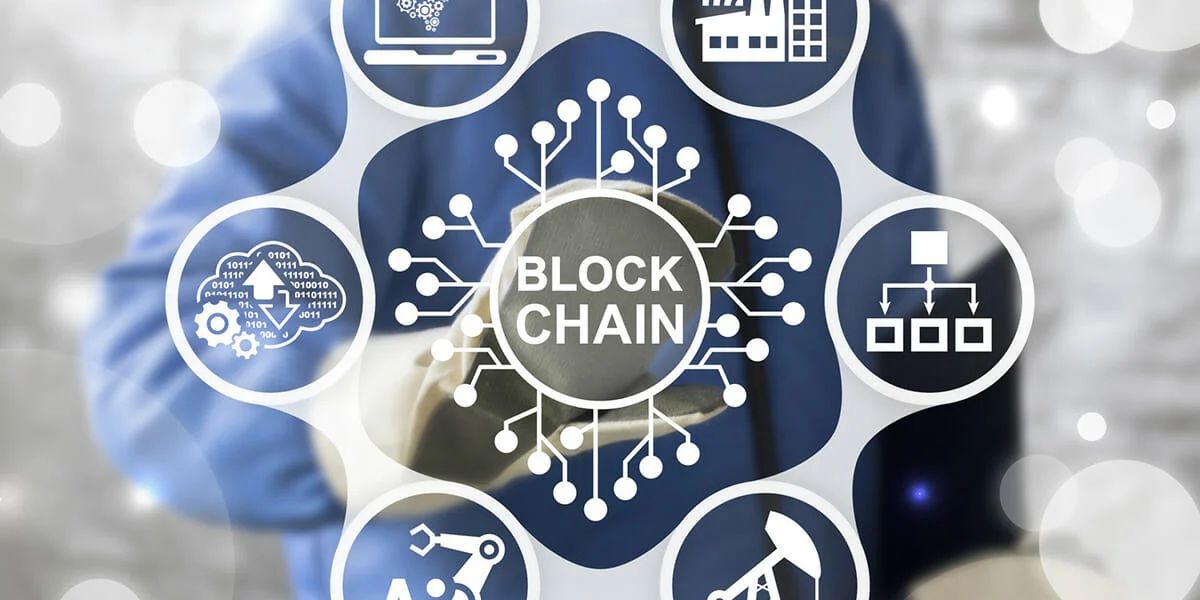Introduction
Blockchain technology has been a buzzword in recent years, revolutionizing various industries such as finance, supply chain management, and healthcare. But have you ever wondered who manages the blockchain? In this article, we delve into the intricacies of blockchain management and explore the different governance models that govern this decentralized technology.
But first, let’s understand what exactly blockchain is and how it works.
Blockchain is a distributed ledger technology that allows for secure and transparent peer-to-peer transactions. It is essentially a chain of blocks, where each block contains a list of transactions. These blocks are linked together using cryptographic hashes, forming an immutable record of transactions.
So how does blockchain ensure the integrity and security of these transactions?
Blockchain operates on a decentralized network of computers, known as nodes, where each node has a copy of the entire blockchain. Transactions are verified and added to the blockchain through a process called consensus.
Consensus mechanisms, such as Proof of Work (PoW) or Proof of Stake (PoS), ensure that all nodes agree on the validity of a transaction before it is added to the blockchain. This process prevents fraud and tampering, making the blockchain a trusted and reliable system.
Now that we have a basic understanding of blockchain, let’s explore the role of miners and their involvement in managing the blockchain.
What is Blockchain?
Blockchain is a revolutionary technology that has gained significant attention in recent years. Simply put, it is a decentralized and distributed ledger system that allows for secure, transparent, and tamper-resistant transactions.
At its core, blockchain is a chain of blocks, where each block contains a list of transactions. These blocks are linked together using cryptography, ensuring that the contents of the block cannot be altered without detection. In other words, once a transaction is recorded on the blockchain, it is virtually impossible to modify or erase.
One of the key features of blockchain is its decentralized nature. Unlike traditional centralized systems where a single entity controls the data, a blockchain operates on a network of computers, known as nodes, spread across the globe. Each node has a copy of the entire blockchain, ensuring that the information is replicated and distributed across multiple locations.
Another important aspect of blockchain is its transparency. Every transaction recorded on the blockchain is visible to all participants in the network. This transparency creates a sense of trust and accountability, as anyone can verify and audit the transactions in real-time.
Blockchain technology is often associated with cryptocurrencies like Bitcoin, which was the first application built on top of the blockchain. However, the potential applications of blockchain go well beyond digital currencies. It has the capability to revolutionize various industries, including finance, supply chain management, healthcare, logistics, and more.
By leveraging the decentralized and transparent nature of blockchain, organizations can streamline their processes, reduce costs, enhance security, and create new business models. For example, in supply chain management, blockchain can provide an immutable and transparent record of the entire supply chain, reducing fraud and counterfeit products. In healthcare, blockchain can improve data security and interoperability, facilitating the sharing of medical records and ensuring patient privacy.
Overall, blockchain is a groundbreaking technology that has the potential to reshape industries and transform how we interact, transact, and trust one another. Its decentralized nature, transparency, and immutability set the foundation for a more secure, efficient, and inclusive digital economy.
How Does Blockchain Work?
Blockchain technology operates on a complex yet elegant system to ensure the security and integrity of transactions. Let’s explore the inner workings of blockchain.
At its core, blockchain is a decentralized network of computers, known as nodes, that collectively maintain a shared ledger. This ledger, or blockchain, consists of a chain of blocks, each containing a list of transactions.
When a new transaction is initiated, it is broadcasted to the network of nodes. The nodes validate the transaction by verifying its authenticity and ensuring that the sender has sufficient funds. This validation process is facilitated by consensus mechanisms, which are algorithms that ensure agreement among nodes on the validity of a transaction.
Once the transaction is validated, it is grouped with other validated transactions to form a block. Before being added to the blockchain, the block must go through a computationally intensive process called mining.
Mining involves solving a complex mathematical puzzle that requires substantial computational power. Miners compete against each other to solve the puzzle, and the first miner to find the solution gets to add the block to the blockchain. This process is known as Proof of Work (PoW) and is a key part of blockchain’s security model.
Once a miner successfully mines a block, it is added to the blockchain, and the other miners update their copies of the blockchain. The newly added block contains a reference, known as a hash, to the previous block, thus forming a chain of blocks. This ensures the immutability of the blockchain, as any changes to a previous block would require re-mining all subsequent blocks, which is computationally infeasible.
The blockchain is distributed among all the nodes in the network, ensuring that no single entity has control over the data. Each node maintains a copy of the entire blockchain, making it resilient to attacks and failures. If one node goes offline or becomes compromised, the network remains functional, as other nodes continue to validate and mine transactions.
Overall, the decentralized and transparent nature of blockchain, coupled with the consensus mechanisms and mining process, ensures the security, integrity, and immutability of transactions. It is this innovative combination of technologies that makes blockchain a trustworthy and reliable system for a wide range of applications.
The Role of Miners
In the world of blockchain, miners play a crucial role in maintaining the integrity and security of the network. Let’s explore the role of miners and their contributions to the blockchain ecosystem.
Miners are individuals or entities that participate in the mining process, which involves solving complex mathematical puzzles in order to add new blocks to the blockchain. Their role is to validate and verify transactions, ensure consensus, and secure the network against malicious activities.
When a new transaction is initiated, it is broadcasted to the network of nodes. Miners then collect these transactions and bundle them into a block. But before they can add the block to the blockchain, they must solve a computationally intensive puzzle.
Miners use their computational power and specialized hardware to compete against each other to find the solution. This process is resource-intensive and requires a significant amount of electricity and computational power. Miners invest in powerful hardware and compete for rewards in the form of cryptocurrency tokens, transaction fees, or other incentives.
The first miner to find the solution and validate the block broadcasts their success to the network. Other miners verify the solution and agree to add the block to the blockchain. This consensus mechanism ensures that all nodes in the network agree on the validity of transactions and the order in which they are added to the blockchain.
One of the primary motivations for miners to participate in the network is the incentive system. In most blockchain networks, miners are rewarded with cryptocurrency tokens for successfully mining a new block. This reward incentivizes miners to contribute their computational power and ensure the stability and security of the network.
Furthermore, mining helps to prevent double-spending, which is a critical issue in digital currencies. Miners verify the authenticity of transactions by ensuring that the sender has the necessary funds to complete the transaction. This process adds an additional layer of security and prevents fraudulent activities.
However, the role of miners goes beyond transaction validation and security. Their computational power also contributes to the overall decentralization and resilience of the network. As more miners join the network, the computational power increases, making it more difficult for any individual or group to control the majority of the network.
In summary, miners are essential participants in the blockchain ecosystem. They validate transactions, ensure consensus, secure the network against attacks, and contribute to the decentralization and overall stability of the blockchain. Their efforts ensure the integrity, security, and trustworthiness of blockchain technology.
Who Manages the Blockchain?
One of the fundamental principles of blockchain technology is its decentralized nature, which means that no single entity or authority controls the blockchain. Instead, the blockchain is collectively managed and maintained by its network of participants. Let’s explore who these participants are and how they contribute to the management of the blockchain.
In a public blockchain, anyone can join the network and become a participant. These participants are typically categorized into three main roles: nodes, miners, and users.
Nodes are computers that store a copy of the entire blockchain and maintain the network. They validate transactions, communicate with other nodes, and ensure the consistency of the blockchain. Nodes play a crucial role in the overall security and integrity of the blockchain by verifying transactions and participating in the consensus process.
Miners, as discussed earlier, are responsible for adding new blocks to the blockchain. They validate transactions, solve complex mathematical puzzles, and compete to be the first to mine a block. Miners contribute their computational resources to secure the network and ensure the accuracy of transactions.
Users, which include individuals and organizations, interact with the blockchain by initiating, receiving, and verifying transactions. They utilize wallets or other software applications to interact with the blockchain and perform their desired operations. Users play a vital role in the adoption and growth of the blockchain ecosystem.
It’s important to note that the management of the blockchain goes beyond these individual participants. The governance of blockchain technology is a collective effort that involves various stakeholders, including developers, community members, and sometimes even regulators.
The governance of blockchain refers to the rules, decision-making processes, and protocols that guide the development and operation of the blockchain. This governance model can vary depending on the specific blockchain network.
In some cases, a blockchain may have centralized governance, where a single organization or entity has decision-making authority over the blockchain’s development and operation. This approach may provide efficiency and faster decision-making but can also raise concerns about centralization and potential abuse of power.
On the other hand, decentralized governance aims to distribute decision-making power among a wider network of participants. This can be achieved through mechanisms such as voting or consensus among stakeholders. Decentralized governance promotes transparency, inclusivity, and avoids concentration of power.
There is also a hybrid governance model, which combines elements of centralization and decentralization. This model often includes a core group of developers or a foundation that guides the development and direction of the blockchain, while still allowing for input and participation from the wider blockchain community.
Ultimately, the management of the blockchain is a collaborative effort among its participants. Decisions regarding upgrades, protocol changes, and network parameters are made through consensus mechanisms and governance models, ensuring that the blockchain remains secure, scalable, and aligned with the interests of its stakeholders.
Blockchain Governance Models
The governance of blockchain networks plays a crucial role in defining how key decisions are made and how the network is managed. Different blockchain networks employ various governance models to ensure the smooth operation and evolution of the technology. Let’s explore some of the common blockchain governance models.
Centralized Governance:
In a centralized governance model, the decision-making power lies with a single entity or organization. This entity has the authority to set rules, make changes to the protocol, and manage the operations of the blockchain. While centralized governance can provide efficiency and faster decision-making, it raises concerns about centralization, censorship, and potential abuse of power.
Decentralized Governance:
Decentralized governance aims to distribute decision-making power among a wider network of participants. This model promotes transparency, inclusivity, and avoids concentration of power. Decisions are made through mechanisms such as voting or consensus among stakeholders. The blockchain community actively participates in proposing and voting on protocol upgrades, changes, and network parameters.
Hybrid Governance:
The hybrid governance model combines elements of both centralized and decentralized governance. It typically involves a core group of developers or a foundation that guides the development and direction of the blockchain. However, the wider blockchain community still has the opportunity to provide input and participate in decision-making processes. This model aims to strike a balance between efficiency and inclusivity.
It’s important to note that each blockchain network may have its own governance model tailored to its specific needs and goals. Some networks may adopt a more centralized governance approach during the early stages to expedite decision-making and development, while gradually transitioning to a more decentralized model as the network matures and the community grows.
Blockchain governance extends beyond technical decision-making. It also encompasses aspects such as community management, dispute resolution, and enforcement of network rules. Effective governance frameworks strive to create an environment of trust, fair participation, and consensus among all stakeholders.
The rise of decentralized autonomous organizations (DAOs) has further expanded the possibilities for blockchain governance. DAOs are organizations run by smart contracts, where decision-making is automated and transparent. Participants hold governance tokens that enable them to vote on proposals and influence the direction of the organization.
Ultimately, the governance model adopted by a blockchain network significantly impacts its sustainability, scalability, and ability to adapt to changing needs. Striking the right balance between efficiency, inclusivity, and decentralization is a ongoing challenge for blockchain projects, and the evolution of governance models will continue to shape the future of decentralized technologies.
Centralized Governance
Centralized governance in the context of blockchain refers to a governance model where the decision-making power and control over the blockchain network are concentrated in the hands of a single entity or organization. In this model, a central authority has the authority to set rules, make changes to the blockchain protocol, and manage the overall operations of the network.
This governance model offers certain advantages. Firstly, it allows for efficient decision-making as there is a central authority responsible for making prompt and effective choices regarding the development and management of the blockchain. This can lead to faster upgrades, quicker responses to security threats, and streamlined operations.
Furthermore, a centralized governance model may provide greater accountability as a single entity is responsible for the actions and decisions made regarding the blockchain. This accountability can help build trust among users and stakeholders, as they know who ultimately holds the responsibility for the success and security of the network.
However, centralized governance also raises concerns and challenges. One of the primary concerns is the potential for abuse of power. When decision-making authority is concentrated in the hands of a single entity or a small group of entities, there is a risk that they may prioritize their own interests rather than the broader interests of the network participants.
Centralized governance can also lead to a lack of transparency and inclusivity. The decision-making process may not involve meaningful input from the wider community, stifling innovation and limiting the diversity of perspectives. This lack of inclusivity can hinder the development and growth of the blockchain ecosystem, as the network participants may feel marginalized and disempowered.
An additional challenge with centralized governance is its vulnerability to censorship and external influence. If a centralized authority succumbs to external pressure or regulatory requirements, it can compromise the core principles of decentralization and immutability that blockchain technology is built upon.
Despite these challenges, centralized governance can be seen as a pragmatic approach in certain scenarios, especially during the early stages of a blockchain’s development. It can provide a clear direction, expedite decision-making, and ensure the efficient development and deployment of the technology.
It’s important to note that centralized governance is not inherently bad or unworthy of consideration. Some blockchain projects may choose a centralized governance model as it aligns with their specific goals and requirements. However, it is crucial to strike a balance between centralized decision-making and the principles of decentralization, transparency, and community involvement to ensure the long-term sustainability and success of the blockchain network.
Decentralized Governance
Decentralized governance is a key feature of blockchain technology, emphasizing the distribution of decision-making power among a network of participants. In this governance model, no single entity holds complete control over the blockchain network. Instead, decision-making is driven by consensus among stakeholders, promoting transparency, inclusivity, and the principles of decentralization.
Decentralized governance enables a more democratic approach, allowing participants to have a significant say in the development, evolution, and operation of the blockchain network. This model provides equal opportunities for individuals and entities to participate, contribute, and influence the decision-making process.
One of the primary benefits of decentralized governance is the resilience it provides against censorship and external influence. As decision-making power is distributed among a diverse group of participants, it becomes more challenging for any single entity or group to manipulate or control the network. This helps to preserve the key principles of blockchain, such as trust, immutability, and transparency.
Furthermore, decentralized governance allows for collective intelligence and diverse perspectives to shape the future of the blockchain network. Participants can propose ideas, raise concerns, and vote on proposals, ensuring that decisions are made in the best interest of the entire network. This inclusivity fosters innovation, encourages community participation, and leads to a more sustainable and robust blockchain ecosystem.
Consensus mechanisms, such as Proof of Stake (PoS) or Proof of Authority (PoA), often play a role in decentralized governance. These mechanisms enable participants to contribute their resources, such as tokens or reputation, to influence decision-making. Through voting or staking, participants can collectively decide on protocol upgrades, network parameters, or other important decisions that impact the blockchain network.
Decentralized autonomous organizations (DAOs) provide an example of decentralized governance in action. DAOs are organizations run by smart contracts, eliminating the need for centralized control. Participants hold governance tokens and can vote on proposals or allocate resources. DAOs offer transparency, programmable governance rules, and a high level of autonomy, further enhancing the principles of decentralized governance.
However, decentralized governance is not without challenges. The decision-making process can sometimes be slow or contentious, as achieving a consensus among participants may require time and effort. Moreover, ensuring the active participation of all stakeholders can be a challenge, as individual interests and motivations may vary.
Nonetheless, decentralized governance is a vital aspect of blockchain technology, allowing for an inclusive, transparent, and democratic approach to managing blockchain networks. As the blockchain ecosystem continues to evolve, decentralized governance models will play a significant role in shaping the future of decentralized technologies.
Hybrid Governance
Hybrid governance is a governance model that combines elements of both centralized and decentralized governance. In this model, decision-making authority is shared between a core group of developers, a foundation, or a governing body, while still allowing for input and participation from the wider blockchain community. This approach aims to strike a balance between efficiency and inclusivity.
The core group or foundation in a hybrid governance model often takes the responsibility of guiding the development and direction of the blockchain network. They propose protocol upgrades, coordinate development efforts, and provide technical expertise. This centralized decision-making helps ensure efficiency and a clear strategic direction for the blockchain.
However, the wider blockchain community is given the opportunity to participate and contribute to the decision-making process. This can be through voting on proposals, participating in community forums, or submitting improvement suggestions. The input from the community ensures that the decision-making process is more transparent, inclusive, and aligned with the interests of the network participants.
Hybrid governance models can also feature a formal governance framework, which outlines the rules and processes for decision-making. The framework may define parameters for upgrading the blockchain’s protocol, resolving conflicts, and involving community members in key decisions.
The hybrid model addresses some of the challenges faced by both centralized and decentralized governance models. It allows for efficient decision-making and coordination, as a dedicated core group oversees the blockchain’s development. At the same time, it integrates community feedback and fosters community participation, preserving the principles of decentralization.
The hybrid approach can be particularly suited for blockchain networks that require technical expertise and consistency in development, while also valuing community participation and inclusivity. It strikes a compromise between centralized control and the collective intelligence of the wider community.
However, implementing an effective hybrid governance model can be complex. Challenges include striking the right balance between centralized decision-making and community involvement, ensuring transparency in decision-making processes, and maintaining accountability to both the core group and the wider community.
Nonetheless, hybrid governance models have demonstrated success in various blockchain networks. They allow for a dynamic and adaptable governance structure, where the blockchain can benefit from the knowledge and expertise of a dedicated core group while still benefiting from the perspectives and contributions of a diverse and inclusive community.
As blockchain technology continues to evolve, hybrid governance models will likely become increasingly prevalent, offering a flexible and inclusive approach to managing blockchain networks.
Consensus Mechanisms
Consensus mechanisms lie at the heart of blockchain technology, ensuring that all participants in the network agree on the validity of transactions and the order in which they are added to the blockchain. These mechanisms enable decentralized decision-making and maintain the integrity and security of the blockchain. Let’s explore some of the common consensus mechanisms utilized in blockchain networks.
Proof of Work (PoW):
In Proof of Work, miners compete to solve complex mathematical puzzles using computational power. The first miner to solve the puzzle gets the right to add the next block to the blockchain and is rewarded with cryptocurrency tokens. PoW introduces a high level of security against double-spending and prevents malicious actors from tampering with the blockchain. However, it requires significant computational resources, energy consumption, and can lead to centralization due to the concentration of mining power.
Proof of Stake (PoS):
Proof of Stake selects validators to create new blocks based on the number of cryptocurrency tokens they hold and are willing to “stake” as collateral. Validators are chosen in a deterministic manner, taking into account factors such as token age or random selection. PoS reduces the energy consumption of blockchain networks significantly compared to PoW and allows for a higher degree of scalability. However, PoS introduces a potential drawback of “nothing at stake” problem, where validators may attempt to validate multiple competing versions of the blockchain.
Delegated Proof of Stake (DPoS):
Delegated Proof of Stake introduces a voting mechanism where token holders elect a limited number of “delegates” to validate transactions and produce blocks on their behalf. These delegates are responsible for maintaining the network’s operations and ensuring consensus. DPoS offers fast confirmation times, scalability, and energy efficiency. However, it can be criticized for its potential centralization, as power is concentrated in the hands of a limited number of delegates chosen by the token holders.
Other Consensus Mechanisms:
These are just a few examples of consensus mechanisms, but there are also other innovative models being explored in the blockchain field. For instance, Proof of Authority (PoA) relies on trusted authorities to validate transactions and produce blocks. Raft consensus algorithm is being utilized in some permissioned blockchains to achieve consensus among a fixed set of nodes without requiring extensive computational power.
Choosing the right consensus mechanism depends on the specific requirements of the blockchain network. The mechanism should strike a balance between security, scalability, decentralization, and energy efficiency while aligning with the goals of the network. Different consensus mechanisms offer varying advantages and trade-offs, and blockchain projects often select the one that best suits their needs.
Consensus mechanisms continue to evolve, with ongoing research and development aimed at improving performance, scalability, and sustainability. As blockchain technology advances, novel consensus algorithms may emerge, providing even more efficient and secure ways for participants to reach agreement on the blockchain’s state.
Proof of Work
Proof of Work (PoW) is a consensus mechanism widely used in blockchain networks, most notably in Bitcoin. It serves as the underlying mechanism to validate transactions, secure the network, and ensure the integrity of the blockchain. PoW introduces a competitive process where miners compete to solve complex mathematical puzzles to add new blocks to the blockchain.
In the PoW model, miners utilize computational power to solve mathematical puzzles known as “hash functions.” These hash functions require extensive computational resources, making it computationally expensive to find the solution. Miners must make numerous attempts, adjusting their input until they find the correct solution.
The mining process involves a race among miners to solve the puzzle. The first miner to successfully find the solution broadcasts it to the network, proving that they have engaged in the required computational work. Other miners then verify the solution, and once they reach a consensus on its validity, the new block is added to the blockchain.
One of the primary advantages of PoW is its robust security. The computational work required to solve the puzzles ensures that malicious actors would need an exorbitant amount of computational power to tamper with the blockchain. To alter a block, an attacker would need to recalibrate all subsequent blocks, making it computationally infeasible and economically impractical.
Another advantage of PoW is its distributed nature. The mining process is open to anyone with access to computational power, ensuring that no single entity or group can control the network. The decentralized nature of PoW promotes transparency, immutability, and trust in the blockchain, as no single party dominates the decision-making process or the validation of transactions.
However, PoW does come with some limitations. The intensive computational requirements for mining make it energy-intensive, leading to concerns about its environmental impact. Additionally, PoW can result in significant centralization as mining operations become increasingly specialized and require sophisticated equipment. This concentration of mining power may reduce the decentralization of the network.
Despite its challenges, PoW remains a widely adopted consensus mechanism due to its proven security and resilience. It has successfully powered cryptocurrencies like Bitcoin for over a decade. Furthermore, ongoing research and development aim to address the limitations of PoW, such as the exploration of alternative energy-efficient mining methods or mechanisms that incentivize decentralization.
In summary, Proof of Work serves as a robust consensus mechanism in blockchain networks, ensuring security, integrity, and decentralization. Although it faces challenges regarding energy consumption and potential centralization, it remains a fundamental building block of blockchain technology.
Proof of Stake
Proof of Stake (PoS) is a consensus mechanism utilized in various blockchain networks, offering an alternative approach to validate transactions and secure the network. Unlike Proof of Work (PoW), which relies on computational power, PoS relies on the ownership or “stake” of cryptocurrency tokens to determine who gets to validate blocks and add them to the blockchain.
In PoS, participants in the network, often referred to as validators or stakeholders, are selected to create new blocks based on the number of cryptocurrency tokens they hold and are willing to “stake” as collateral. The selection is typically determined through a deterministic process that may take into account factors such as token age, random selection, or a combination of different parameters.
Since block validators are chosen in a deterministic manner, there is no competition or resource-intensive mining involved in PoS systems. This results in significantly lower energy consumption and a smaller carbon footprint compared to PoW-based blockchains.
One of the primary advantages of PoS is its scalability. Since validators are chosen based on their stake, PoS allows for a higher number of validators to participate in block validation. This scalability potential makes PoS a suitable consensus mechanism for blockchain networks aiming to handle a large number of transactions at a faster rate, as it reduces the likelihood of network congestion.
Moreover, PoS provides an economic incentive to maintain network security. Validators who misbehave or try to attack the network risk losing the cryptocurrency tokens they have staked as collateral. This introduces an economic disincentive for malicious actions and promotes the overall security and stability of the blockchain network.
However, PoS is not without certain challenges and considerations. Critics argue that PoS introduces the potential problem of the “nothing at stake” scenario. This means that validators may have an incentive to validate multiple competing versions of the blockchain, as they have nothing to lose by doing so. Various mitigation techniques, such as a slashing mechanism or penalties for malicious behavior, are implemented to address this issue.
Additionally, PoS can raise concerns regarding centralization. Validators with a significant number of tokens can have a larger influence on the decision-making process and network consensus. Some PoS-based blockchains introduce mechanisms to mitigate centralization, such as randomization or delegation, where token holders can delegate their stake to trusted validators.
In summary, Proof of Stake provides an alternative consensus mechanism to Proof of Work, offering scalability, energy efficiency, and economic incentives for securing the blockchain network. While challenges such as the “nothing at stake” problem and potential centralization must be addressed, ongoing research and development aim to optimize the effectiveness of PoS and enhance its applicability to various blockchain networks.
Delegated Proof of Stake
Delegated Proof of Stake (DPoS) is a consensus mechanism used in certain blockchain networks to validate transactions, achieve consensus, and secure the network. DPoS is a variation of the Proof of Stake (PoS) consensus mechanism that introduces a uniquely structured governance model and delegates the responsibility of block validation to a limited number of elected nodes known as “delegates” or “witnesses.”
In a DPoS system, token holders within the blockchain network engage in a voting process to elect a set number of delegates who will be responsible for producing blocks and maintaining the blockchain. The number of delegates can vary depending on the specific blockchain implementation, but it is typically limited to a certain fixed number.
One of the primary advantages of DPoS is its potential for fast confirmation times and high transaction throughput. With a limited number of delegates responsible for block production, consensus can be achieved more quickly compared to other consensus mechanisms. This characteristic makes DPoS particularly suited for applications that require near-instantaneous transaction confirmations.
DPoS also offers energy efficiency advantages over traditional proof-of-work (PoW) consensus mechanisms. Since DPoS does not rely on extensive computational power, it consumes significantly less electricity, making it more environmentally friendly and cost-effective in terms of resource utilization.
Moreover, DPoS ensures network security through reputation-based mechanisms. Delegates who wish to remain in their positions need to maintain a good reputation by consistently acting in the best interest of the network. If a delegate acts maliciously or fails to fulfill their duties, they could be voted out by the community, and a new delegate would take their place. This reputation-based approach increases accountability and discourages potential attacks on the network.
However, DPoS does introduce potential concerns related to centralization. With a limited number of delegates, power can become concentrated in the hands of a few entities or individuals who were elected as delegates. This concentration of power may go against the principles of decentralization and introduce the risk of collusion or influence by external parties.
To address centralization risks, some DPoS-based blockchain networks employ mechanisms that encourage decentralization. For instance, randomization of delegate selection, rotation of delegates, or the ability for token holders to delegate their voting power to trusted representatives can help distribute power and enhance the democratic nature of DPoS systems.
In summary, Delegated Proof of Stake (DPoS) is a consensus mechanism that allows a limited number of elected delegates to validate transactions and produce blocks. DPoS offers fast confirmation times, energy efficiency, and reputation-based security. Nevertheless, addressing centralization concerns and maintaining a balanced distribution of power remain ongoing challenges in DPoS-based blockchain networks.
Conclusion
Blockchain technology has revolutionized a wide range of industries by introducing decentralized and transparent systems for managing transactions and data. Understanding the various aspects of blockchain management and governance is crucial to comprehending how these networks operate and evolve.
In this article, we explored the roles of miners, who validate transactions and maintain the security of the blockchain. We discussed how blockchain networks are managed through different governance models, including centralized, decentralized, and hybrid approaches.
Centralized governance offers efficient decision-making but raises concerns about centralization and potential abuse of power. On the other hand, decentralized governance promotes inclusivity, transparency, and the principles of decentralization. Hybrid governance models aim to strike a balance between efficiency and community involvement.
Consensus mechanisms play a vital role in maintaining agreement among participants in the blockchain network. Proof of Work (PoW) relies on computational puzzles to secure the network and validate transactions, while Proof of Stake (PoS) leverages token ownership to achieve consensus. Delegated Proof of Stake (DPoS) introduces a governance model where elected delegates validate blocks and maintain the blockchain.
Each consensus mechanism has its advantages and challenges, and blockchain projects must consider their specific goals, security requirements, and scalability needs when choosing a suitable mechanism.
As blockchain technology continues to evolve, we can expect further innovation and exploration of governance models and consensus mechanisms. Developers, participants, and researchers are continuously working to improve scalability, security, sustainability, and inclusivity in blockchain networks.
In conclusion, understanding who manages the blockchain, the governance models utilized, and the consensus mechanisms employed is vital for anyone looking to navigate the world of blockchain technology. By embracing decentralized principles, fostering community participation, and leveraging innovative solutions, blockchain networks can unlock their full potential and drive the next wave of technological advancement.







